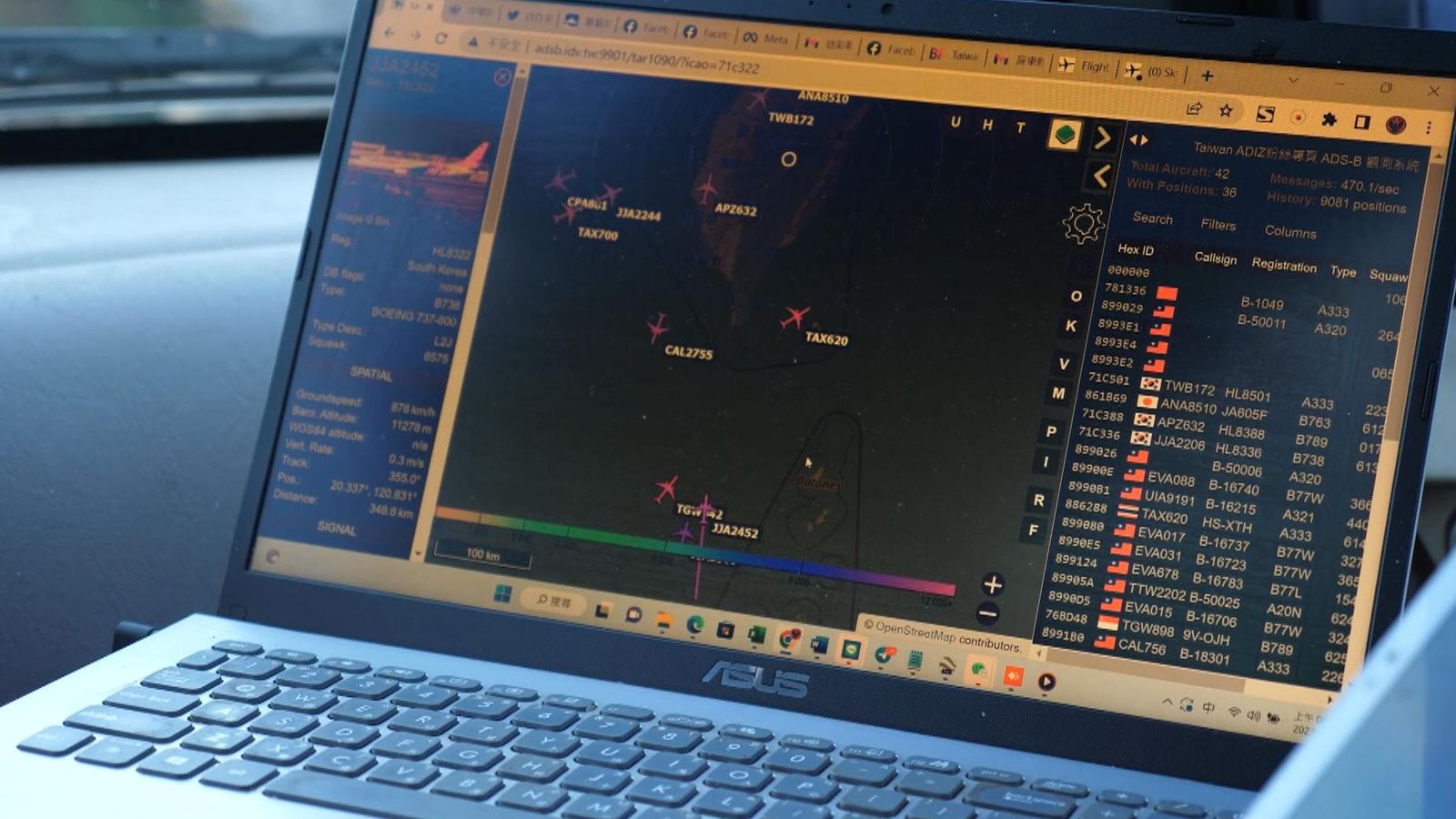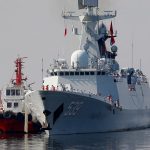We set off before dawn to drive to Taiwan’s most southern point.
A remote, wind-swept place with a unique insight into a potentially perilous standoff playing out above.
Atop a blustery hill, you can see out across the water in three directions, the Pacific Ocean to the East, the Bashi Channel to the South and West across Taiwan Strait.
Our host is a former navy radar operator and radio enthusiast.
Robin Hsu comes to this spot almost every day with a car rigged up with homemade antenna and audio receivers.
He says it’s the best place on the island to listen in to fighter jet activity.
There are plenty of mundane communications captured by his kit, the crew of nearby ships conversing for instance, and air traffic control directing commercial aircraft.
Jacinda Ardern to resign as New Zealand’s PM
Elon Musk’s ‘lies’ about Tesla on Twitter cost investors millions, court told
‘An indescribable pain’: Ukrainian minister among 14 dead in helicopter crash near Kyiv
But others are extraordinary, and it didn’t take long for us to hear some.
A sudden, crackled but loud burst of sound through Robin’s rigged up speakers is a voice in mandarin, identifying itself as Taiwanese military with a clear direction to Chinese fighter jets.
“You have entered our South East ADIZ [Air defence identification Zone],” it barks.
“You are jeopardising our safety, turn around and leave immediately.”
Just a few moments later, a similar message follows.
“This is usual,” says Robin.
It is evidence that somewhere in the skies above, a Chinese fighter jet has approached Taiwanese airspace – crossing over what’s known as the Median Line, the unofficial maritime border between the two.
Taiwan is a self-governing democracy that China sees as its own. Taking control of the island is a stated priority of the Chinese leader Xi Jinping and these flights are part of a broader picture of heightened pressure.
Robin records interactions like this every day now and he says he’s noticed a huge increase from when he first started doing this in 2020.
Indeed, the statistics support his observations, the number of Chinese jets making these trips increased fivefold from 2020 to 2022.
And he has other recordings too, an American voice sending a warning to Chinese aircraft.
“I’m a United States military aircraft, conducting lawful military activity, in inter airspace and exercises, as guaranteed by international law,” it says.
“I’m operating with the duties, rights and duties of all states.”
Robin thinks the tone is sometimes intentionally mocking and provocative.
And perhaps most intriguingly, he sometimes hears Chinese pilots too. The Chinese voices he says come from within the planes themselves and not from military command.
We hear one issuing a warning to US aircraft to not stray any closer to Chinese airspace.
“This is the PLA [People’s Liberation Army] air force,” it says. “You have entered China’s territorial airspace.”
And then, in English, a robust and clear: “Leave immediately, leave immediately.”
“You can hear they are nervous,” says Robin.
And they may well be. These flights are highly risky – one misstep by either side in such tense and pressured scenarios could quickly escalate into serious conflict.
Robin posts his recordings on his Facebook page. This endeavour costs him significant time and money, so why does he do it?
He says he believes that in the past Taiwanese officials have wanted people to believe things are peaceful and that any risk to the island is limited.
“But the Chinese Communist Party, CCP military jets are always around you, around me.”
He wants people to know the reality of the threat so that is the time comes, Taiwan is prepared.
“I love my country” he says. “This is my duty.”






















